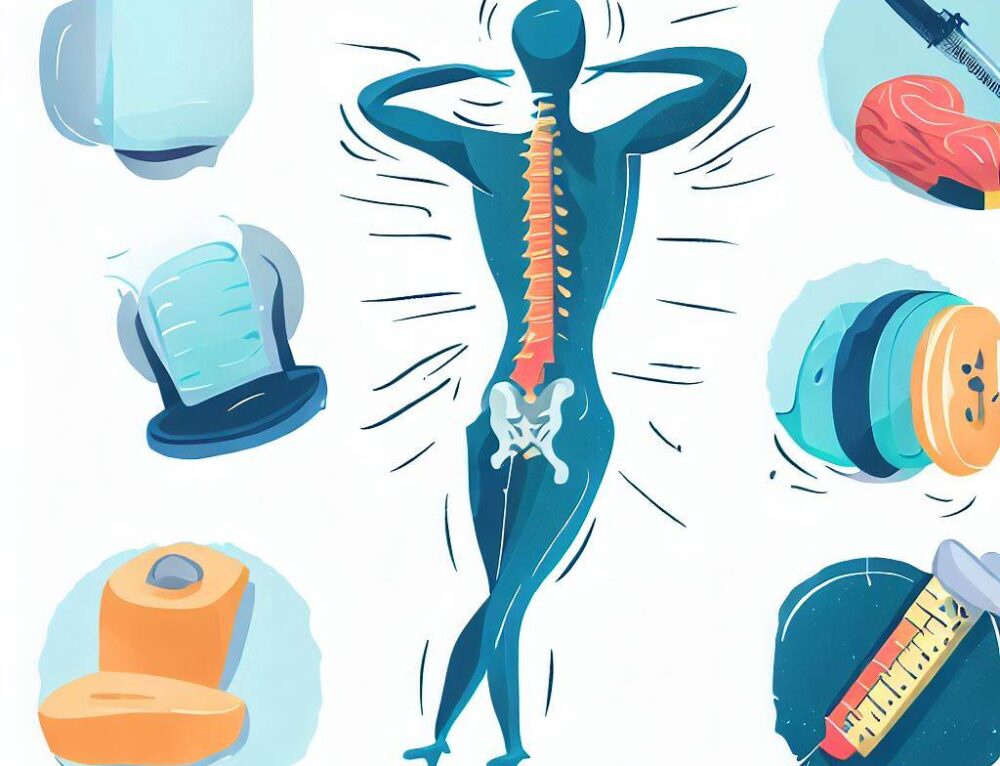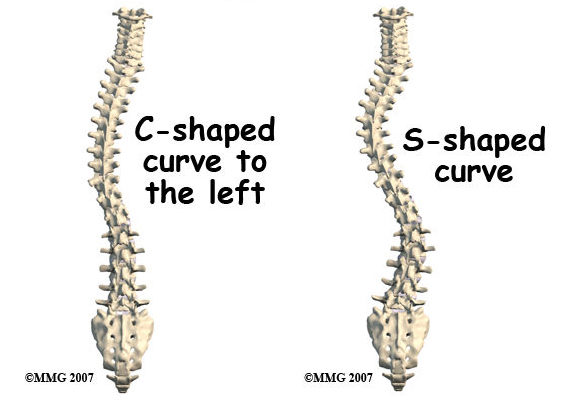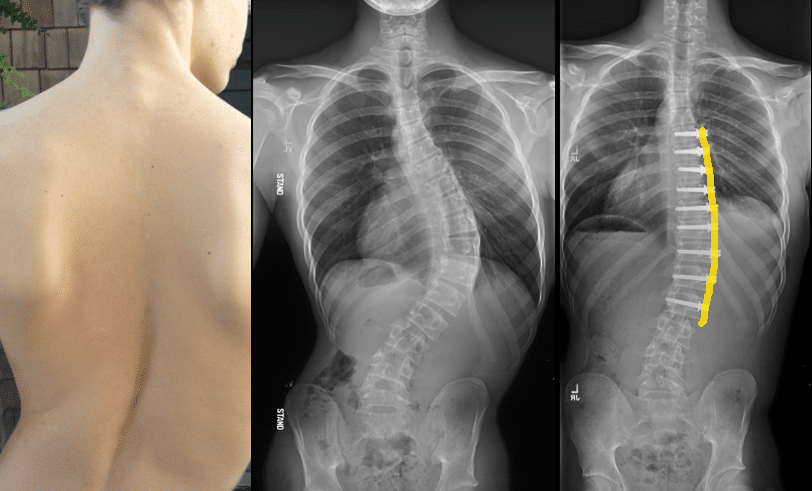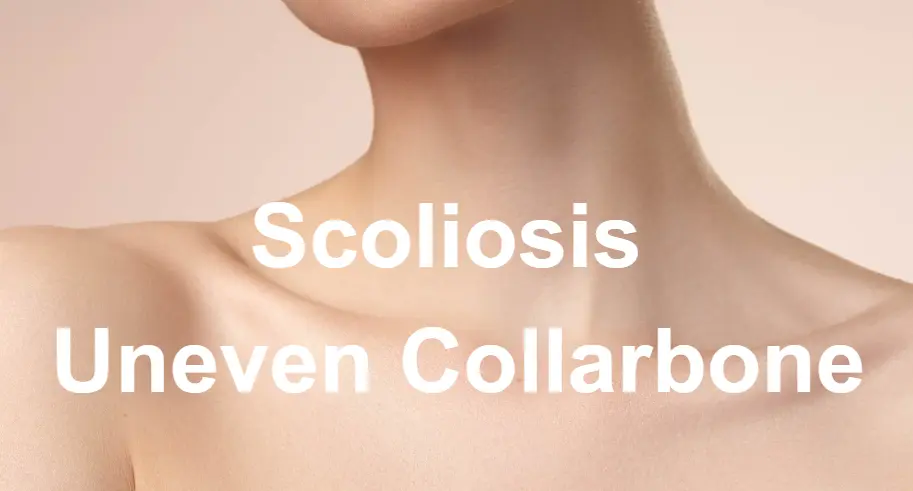Scoliosis is a medical condition characterized by an abnormal curvature of the spine. While the primary focus of scoliosis is often on the spine, it can also have an impact on other parts of the body, including the collarbone. In this article, we will explore the relationship between scoliosis and the collarbone, the types of collarbone misalignment that can occur, the symptoms, diagnosis, and treatment options available for managing uneven collarbone in scoliosis.

What is Scoliosis?
Scoliosis is a condition that causes the spine to curve sideways, resulting in an “S” or “C” shape. It can affect people of all ages, but it most commonly develops during adolescence. According to the American Association of Neurological Surgeons, scoliosis affects approximately 2-3% of the population, with females being more likely to develop the condition than males.

Understanding the Collarbone
The collarbone, also known as the clavicle, is a long bone that connects the shoulder blade to the breastbone. It plays a crucial role in supporting the shoulder and arm, allowing for a wide range of motion. The collarbone is susceptible to misalignment due to its location and its connection to other bones and muscles in the shoulder and neck region.
The Relationship Between Scoliosis and the Collarbone
In individuals with scoliosis, the abnormal curvature of the spine can lead to changes in the alignment of the collarbone. The spine and collarbone are interconnected through various muscles, ligaments, and joints. As the spine curves, it can pull on these structures, causing the collarbone to become misaligned.
Types of Collarbone Misalignment in Scoliosis
There are several types of collarbone misalignment that can occur in individuals with scoliosis. One common misalignment is known as a high shoulder, where one shoulder appears higher than the other. This can be caused by the rotation of the spine, which pulls the collarbone upwards on one side. Another type of misalignment is a protruding collarbone, where one collarbone sticks out more prominently than the other. This can be a result of the spine curving towards one side, causing the collarbone to shift out of its normal position.
Symptoms of Uneven Collarbone in Scoliosis
Uneven collarbone in scoliosis can cause a range of symptoms. These may include visible asymmetry in the shoulders, with one shoulder appearing higher or more prominent than the other. Individuals may also experience pain or discomfort in the shoulder, neck, or upper back region. Limited range of motion in the affected shoulder and muscle imbalances can also occur.
Diagnosing Uneven Collarbone in Scoliosis
Diagnosing uneven collarbone in scoliosis typically involves a comprehensive evaluation by a healthcare professional. This may include a physical examination to assess the alignment of the collarbone and spine, as well as a review of the individual’s medical history. Imaging tests such as X-rays or MRI scans may also be ordered to provide a detailed view of the spine and collarbone.

Treatment Options for Uneven Collarbone in Scoliosis
The treatment options for uneven collarbone in scoliosis depend on the severity of the misalignment and the individual’s overall health. In mild cases, conservative approaches such as physical therapy and exercises may be recommended. In more severe cases, surgical interventions may be necessary to realign the collarbone and correct the underlying spinal curvature.
Physical Therapy and Exercises for Collarbone Alignment
Physical therapy and exercises can play a crucial role in managing uneven collarbone in scoliosis. A skilled physical therapist can develop a personalized exercise program to improve posture, strengthen the muscles supporting the collarbone, and promote proper alignment. These exercises may include stretching, strengthening, and postural correction techniques.
Surgical Interventions for Uneven Collarbone in Scoliosis
In cases where conservative treatments are not effective, surgical interventions may be considered. The specific surgical procedure will depend on the severity of the collarbone misalignment and the underlying spinal curvature. Surgical options may include collarbone realignment, spinal fusion, or the insertion of rods or screws to stabilize the spine.
Managing Uneven Collarbone in Scoliosis: Tips and Recommendations
In addition to medical interventions, there are several tips and recommendations that can help individuals manage uneven collarbone in scoliosis. Maintaining good posture, avoiding heavy lifting or repetitive movements that strain the collarbone, and practicing regular stretching and strengthening exercises can all contribute to improved collarbone alignment. It is also important to follow any recommendations provided by healthcare professionals and attend regular check-ups to monitor progress.
Conclusion
Scoliosis can have a significant impact on the alignment of the collarbone. Understanding the relationship between scoliosis and the collarbone is crucial for effective diagnosis and treatment. Whether through physical therapy, exercises, or surgical interventions, there are various options available to manage uneven collarbone in scoliosis. By addressing collarbone misalignment, individuals with scoliosis can improve their overall posture, reduce pain and discomfort, and enhance their quality of life.
References
- Weinstein, S. L., Dolan, L. A., Cheng, J. C., Danielsson, A., & Morcuende, J. A. “Adolescent idiopathic scoliosis.” The Lancet. 2008;371(9623):1527-1537. doi: 10.1016/S0140-6736(08)60658-3
- Negrini, S., Aulisa, A. G., Aulisa, L., et al. “2016 SOSORT guidelines: Orthopaedic and rehabilitation treatment of idiopathic scoliosis during growth.” Scoliosis and Spinal Disorders. 2018;13:3. doi: 10.1186/s13013-017-0145-8
- Kotwicki, T., Negrini, S., Grivas, T. B., et al. “Methodology of evaluation of morphology of the spine and the trunk in idiopathic scoliosis and other spinal deformities: 6th SOSORT consensus paper.” Scoliosis. 2009;4:26. doi: 10.1186/1748-7161-4-26
- Danielsson, A. J., & Nachemson, A. L. “Back pain and function 23 years after fusion for adolescent idiopathic scoliosis: A case-control study-part II.” Spine (Phila Pa 1976). 2003;28(18). doi: 10.1097/01.BRS.0000083171.33767.B7
- Blount, W. P., & Moe, J. H. “The Milwaukee Brace in the Treatment of Scoliosis.” The Journal of Bone & Joint Surgery. 1960;42(5):749-774. doi: 10.2106/00004623-196042050-00002
- Grivas, T. B., & Vasiliadis, E. S. “The role of the sagittal profile in idiopathic scoliosis.” Scoliosis. 2008;3:15. doi: 10.1186/1748-7161-3-15
- Green, B. N., Johnson, C. D., & Moreau, W. J. “Is there a relationship between idiopathic scoliosis and the practice of chiropractic? A discussion on theoretical insights and hypotheses.” Chiropractic & Manual Therapies. 2006;14:15. doi: 10.1186/1746-1340-14-15
- Aubin, C. É., & Labelle, H. “Simulating the effect of bracing in the treatment of adolescent idiopathic scoliosis.” European Spine Journal. 2006;15(4):470-480. doi: 10.1007/s00586-005-0978-0
- Engsberg, J. R., Tedford, K. G., & Harder, J. A. “Scoliosis and spine-related dysfunction.” Orthopedic Clinics of North America. 1999;30(4):517-531. doi: 10.1016/S0030-5898(05)70108-7
- Murrell, G. A. C., & An, K. N. “Biomechanics of the shoulder.” In: Bucholz, R. W., Heckman, J. D., & Court-Brown, C. M., eds. Rockwood and Green’s Fractures in Adults. 6th ed. Philadelphia: Lippincott Williams & Wilkins; 2006:1191-1230. Link to the book
- Negrini, S., Donzelli, S., Aulisa, A. G., et al. “Surgical versus non-surgical management of scoliosis in children and adolescents: A systematic review of the literature.” European Journal of Physical and Rehabilitation Medicine. 2016;52(6):798-816. doi: 10.23736/S1973-9087.16.04386-3
- Qiu, Y., Zhu, Z., Wang, B., et al. “Radiographic and clinical outcomes of posterior-only instrumentation in the treatment of adolescent idiopathic scoliosis: A long-term follow-up study.” Spine (Phila Pa 1976). 2010;35(10):930-938. doi: 10.1097/BRS.0b013e3181bb3bf2
- Tribus, C. B. “Degenerative lumbar scoliosis: Evaluation and management.” Journal of the American Academy of Orthopaedic Surgeons. 2003;11(3):174-183. doi: 10.5435/00124635-200305000-00004
- Lonstein, J. E., & Carlson, J. M. “The prediction of curve progression in untreated idiopathic scoliosis during growth.” The Journal of Bone and Joint Surgery. American Volume. 1984;66(7):1061-1071. doi: 10.2106/00004623-198466070-00006
- Betz, R. R., Chafetz, R. S., Mulcahey, M. J., et al. “Bracing females with idiopathic scoliosis: A comparison of TLSO and Milwaukee braces.” Journal of Spinal Disorders & Techniques. 1999;12(4):336-340. doi: 10.1097/00024720-199908000-00011

